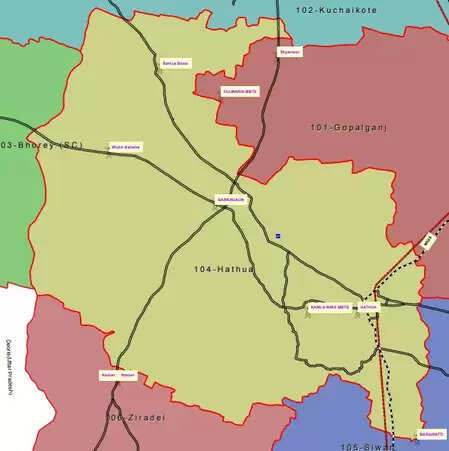Patna, October 12 (IANS). Hathua meeting constituency located in the Gopalganj district of Bihar has its own unique identity in the politics of the state. In addition to being part of Gopalganj Lok Sabha seat, this seat is also in discussion, because in this area there is Phularia Village, which is the ancestral village of Rashtriya Janata Dal (RJD) president and former chief minister of Bihar Lalu Prasad Yadav. As far as politics and history are concerned, the regional comparison of Hathua is regarded as the tendency of power in Bihar. Geographically, Hathua is located in the fertile plains of the western ganga in Bihar. Due to the abundance of alluvial soil, crops such as paddy, wheat, maize and sugarcane are cultivated here in large quantities. Agriculture is the most important economic as here. However, people here are also involved in dairy businesses and small businesses. Migration remains a major social problem here due to a lack of employment and limited industrial opportunities. Over the past few years, improvements in road connection and infrastructure, which have accelerated the rate of development. Hathua is located about 20 kilometers south of the headquarters of the Gopalganj district. It borders Mirganj in the East, Siwan and Chhapra districts in the southwest. Hathua’s distance from the capital of Patna is about 160 kilometers. Hathua and Mirganj Railway Stations on the Siwan-Gopalganj railway connect the region with other parts of the state. From the political point of view, the Hathua meeting constitutes Jamsar, Trilokpur, Mohaicha and Balesara Gram Panchayats of Uchchagaon, apart from Hathua and Phularia blocks. Mirganj Nagar Panchayat is also part of this constituency of the meeting. Despite the fact that it was the home constituency of Lalu Prasad Yadav, RJD could not succeed for long. JDU has won the first two elections (2010 and 2015) since the founding of the region in 2008. RJD received his first success here in the 2020 election, when he won the seat by giving a tough fight to JDU. Not only was the victory symbolic of the RJD, but it also showed that the party regained its lost land in Lalu Yadav’s home field. Because of this wonderful mix of politics, history and social structure, the Hathua constituency constituency is one of those areas of Bihar, where each election is considered an indication of public opinion of not just one seat, but the whole state. Caste comparisons have a deep influence in Hathua’s politics. Communities of Yadav, Rajput, Brahmin, Bania, Kushwaha and Dalit are the most important voter groups here. The majority of Yadavs go in favor of RJD, while Rajputs and Upper Castes generally lean to JDU or BJP. Muslim voters also play a decisive role in areas such as Mirganj and Phulwaria, which sometimes change the Alliance comparisons. According to the data from the 2024 Electoral Commission, the total population of the Hathua constituency is 5,29,438, which includes 2,67,896 men and 2,61,542 women. Of the total of 3,20,877 voters, 1,62,882 are men, 1,57,988 are women and 7 are third gender voters. -—IANS PSK/ABM
Bihar election: political turmoil in Lalu Yadav’s home area Hathua, caste comparison decisively
